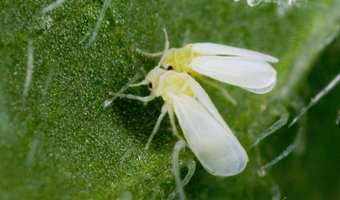 Scientists are sounding the alarm on a tiny, fast breeding insect that wipes cassava in minutes which they say could threaten millions of Africa, with cassava being the third most important source of calories after maize and rice.
Scientists are sounding the alarm on a tiny, fast breeding insect that wipes cassava in minutes which they say could threaten millions of Africa, with cassava being the third most important source of calories after maize and rice.
The Bemisia tabaci also known as ‘super fly’ and one of several whitefly species,
According to the UN's Food and Agriculture Organization (FAO), cassava is the staple food for nearly a billion people in 105 countries, where it comprises as much as a third of daily calories consumed. The cheapest known source of starch, cassava is grown by poor farmers - many of them women - often on marginal land; for these people, the crop is vital for both food security and income generation.
The threat to cassava is particularly alarming as the plant is often called the "Rambo" root for its ability to withstand high temperatures and drought. With climate change expected to take a major toll on maize in the coming decades, many hope cassava will offer an alternative route to food security in Africa. Cassava may also prove to be an important source of biofuel.
From the 1980s to the mid-2000s, CMD ravaged more than 4 million square km in Africa's cassava-growing heartland, stretching from Kenya and Tanzania in the East to Cameroon and the Central African Republic in the West. But in recent years, the scientific community developed cassava varieties resistant to CMD.
"The premature celebrations for this apparent victory were very soon squashed, however, as sinister new reports were received of the occurrence and apparent spread of CBSD in southern Uganda," said James Legg, a leading cassava expert at the International Institute of Tropical Agriculture (IITA).
Until then, scientists had assumed that the viruses causing CBSD could not spread at medium-to-high altitudes; the disease had previously only been reported in coastal areas of East Africa and the low-altitude areas around Lake Malawi. "The spread recorded from Uganda instantly cast doubt of the validity of that earlier theory," said Legg. "Worse still, the disease spread out from Uganda over following years, and into the neighbouring countries of Kenya, Tanzania, Burundi and Rwanda."
CBSD is now a pandemic, threatening Nigeria, the world's largest producer and consumer of cassava. The cassava starch industry in Nigeria generates US$5 billion per year and employs millions of smallholder farmers and numerous small-scale processors.
Only in 2005 were scientists able to confirm that the whitefly responsible for spreading CMD was also responsible for spreading CBSD.
"With this realization, it became clear that the spread of these two disease pandemics was really only a consequence of the fact that East and Central Africa was experiencing a devastating outbreak of the whitefly that transmits both of them," explained Legg.
He said that in the 1980s, researchers recorded an average of less than one fly per plant, but by the mid-1990s, the number of whiteflies had increased a hundredfold.
It seems Bemisia tabaci has been assisted by climate change: The warmer temperatures occurring in higher altitudes have created optimal conditions for the insect to breed rapidly, speeding its adaptation and evolution. More importantly, said Legg, is the fact that these flies seem to have worked out how to do better on cassava plants, whose cyanide production deters all but a very small group of insects. As the whitefly population has exploded, rapid spread of the viral diseases - CMD and CBSD - was an inevitable consequence.
What makes a bad situation even worse, however, is that these diseases, in turn, may promote the whitefly. "These insects also seem to have a close relationship with the viruses that they transmit, and some evidence has shown that the insects do better on virus-diseased plants, leading to an 'I scratch your back, you scratch my back' type of mutually beneficial relationship," Legg said.
Scientists are working towards solutions. A member of Legg's team is examining the impact of climate change on the whitefly in search of ways to deal with the pest. Other planned projects are working to control whiteflies directly, either through introducing other beneficial insects that kill whiteflies, or through producing varieties that combine whitefly and disease resistance.
Efforts to breed high-yielding, disease-resistant plants suitable for Africa's various growing regions will involve going to South America, where cassava originated, and working with scientists at the cassava gene bank of the International Center for Tropical Agriculture (CIAT), IITA's sister organization, in Colombia. CIAT is the biggest repository of cassava cultivars in the world.
Experts at the conference in Italy will also discuss a more ambitious plan to eradicate cassava viruses altogether. The aim will be to develop a regional strategy that gradually replaces farmers' infested cassava plants with virus-free planting material of the best and most disease-resistant cultivars. Approaches to developing these cultivars will include new molecular breeding and genetic engineering technologies to speed up selection. The hope of the team is that by joining forces, and employing the whole range of technologies available, a lasting impact will be made in tackling a crop crisis that poses the single greatest challenge to the future of Africa's cassava crop.
















Comments powered by CComment